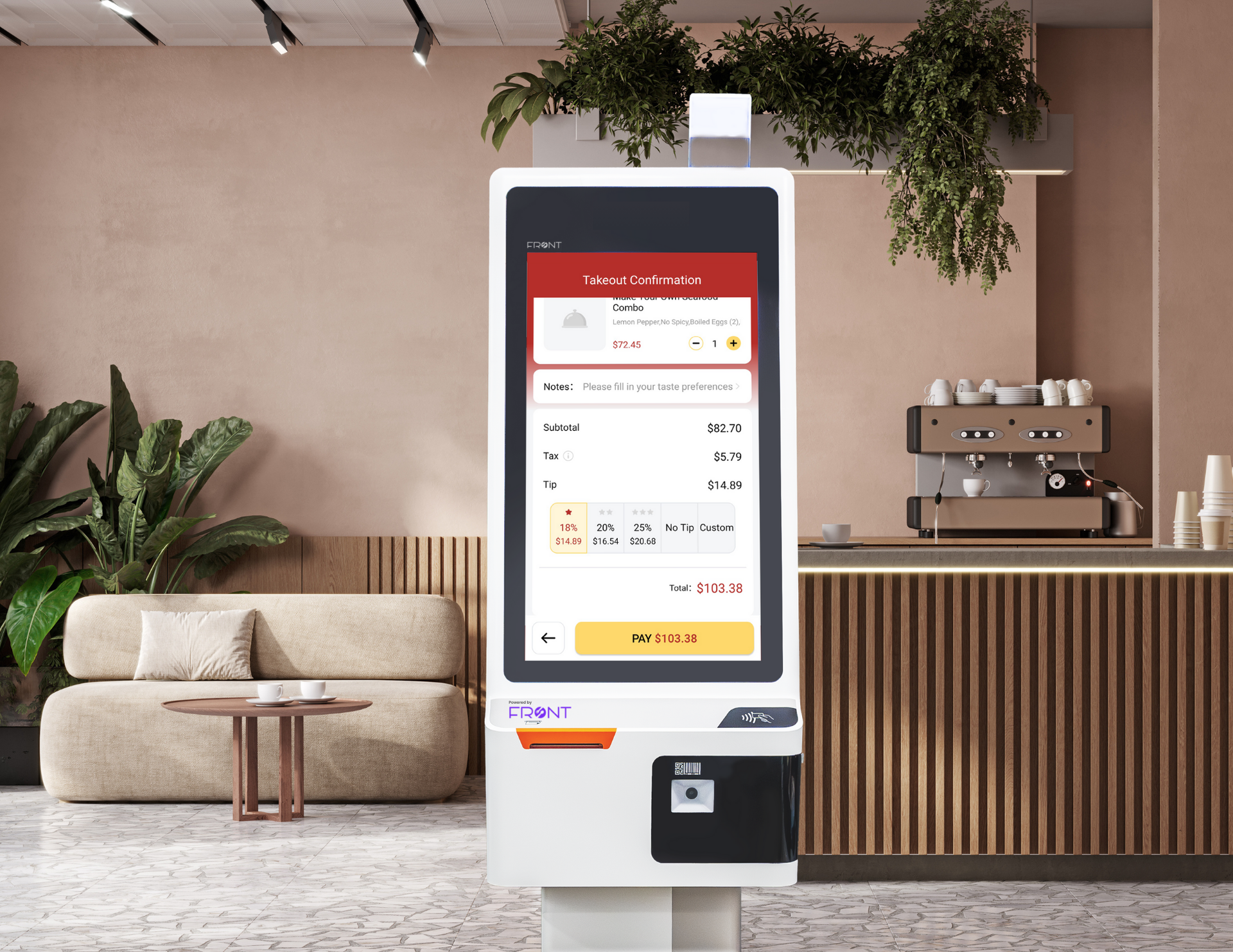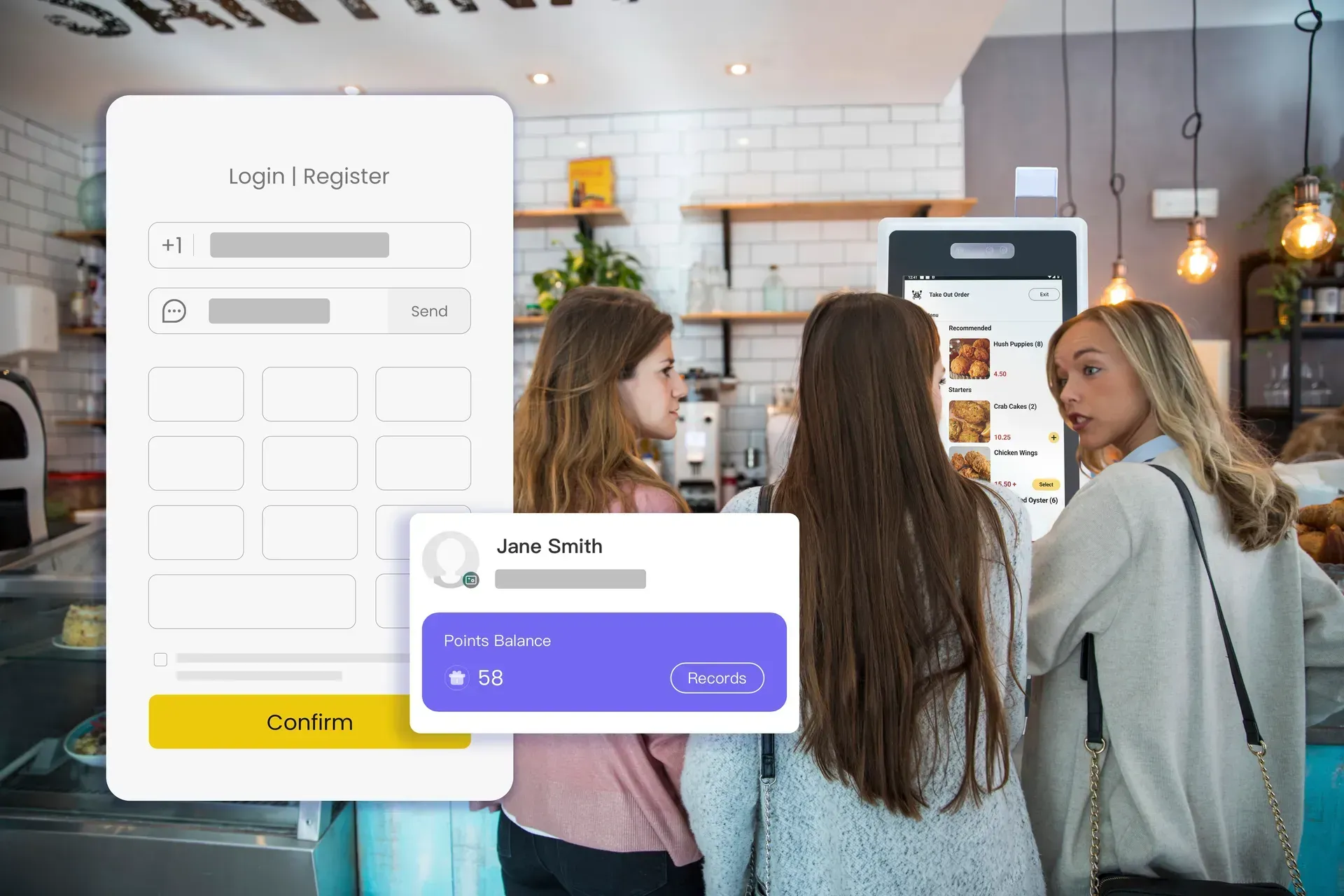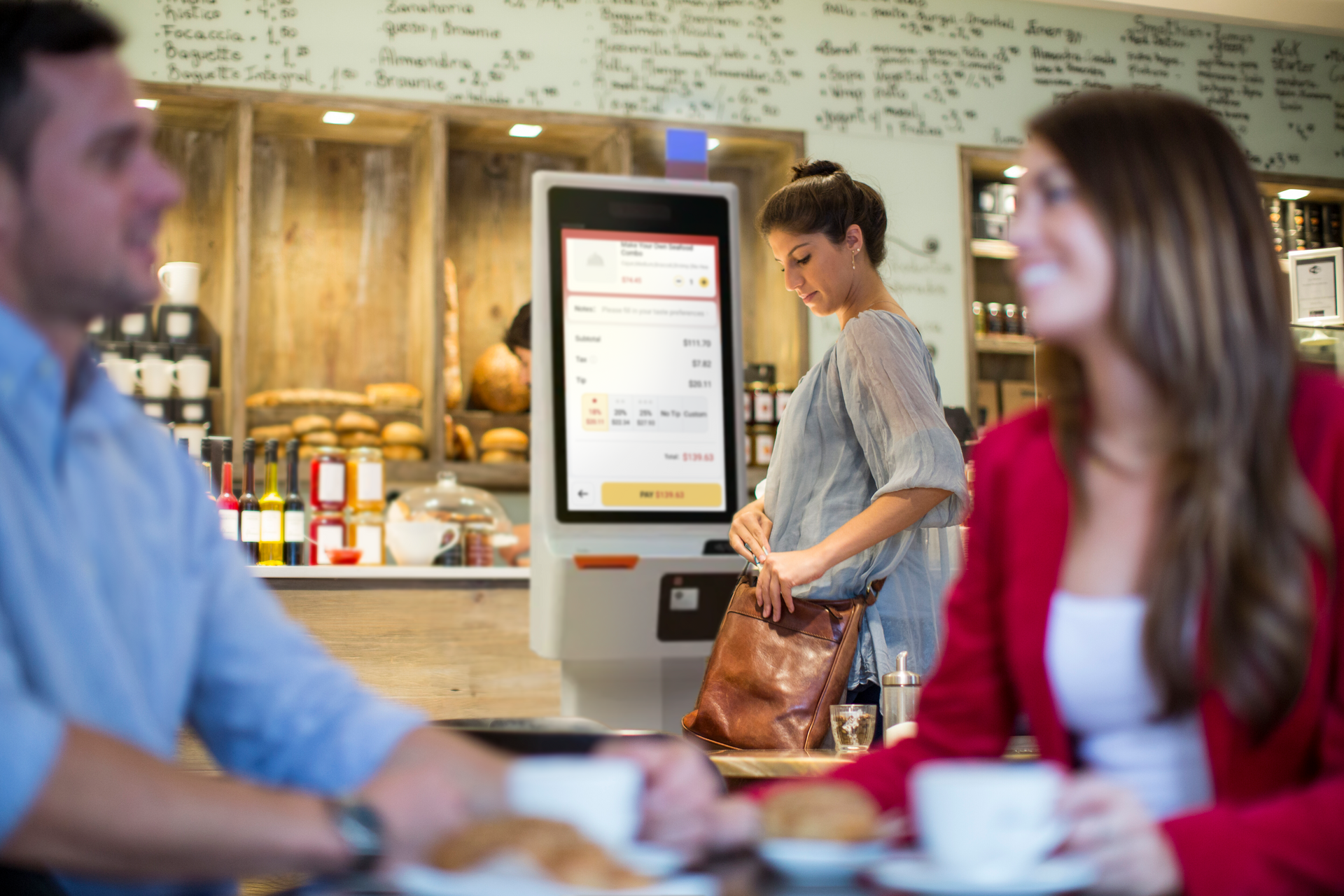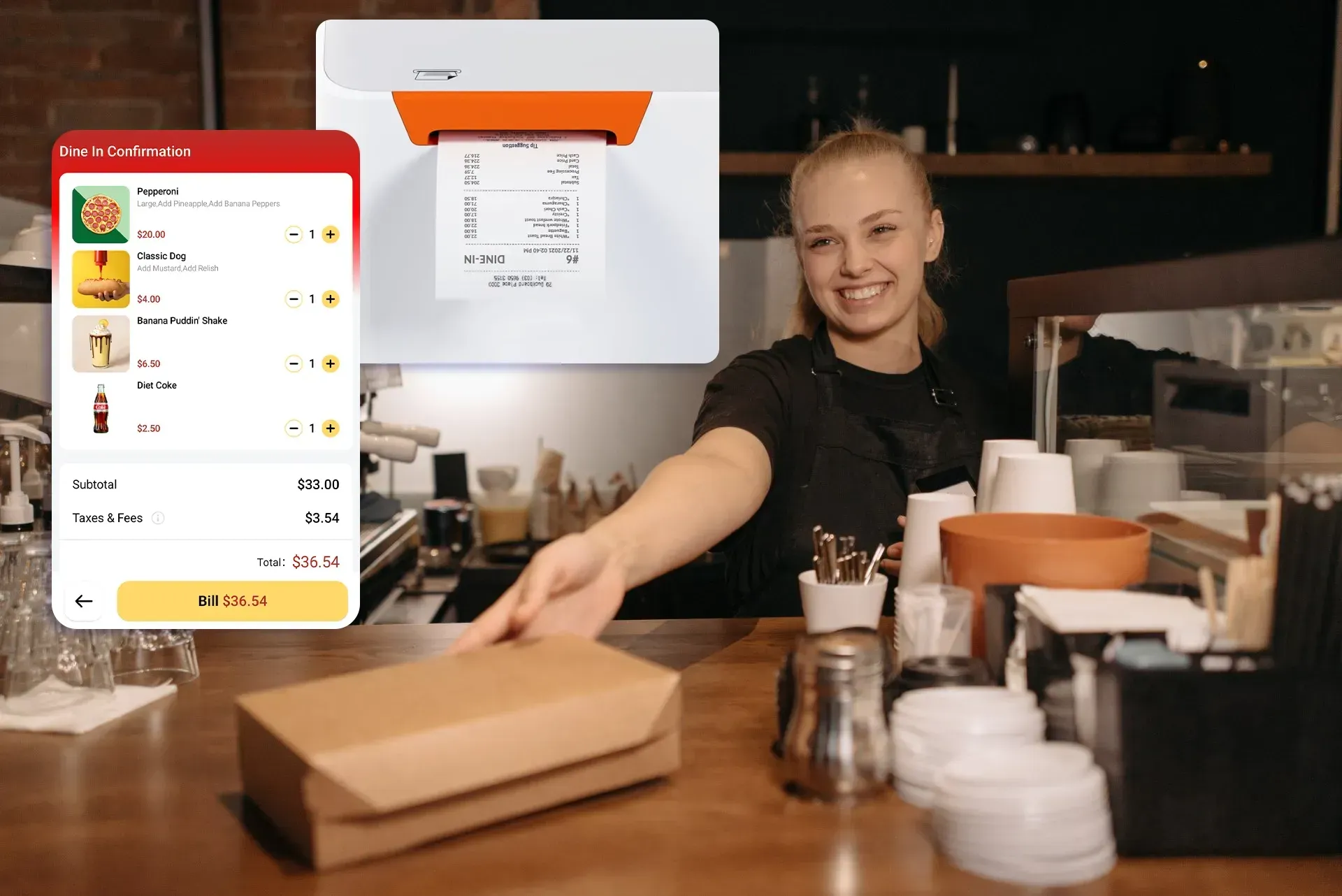Self-Service Kiosks: The Restaurant Game-Changer You Can’t Ignore
If you’ve stepped into a quick-service restaurant (QSR) or fast-casual spot lately, like McDonald’s, you’ve probably seen those sleek, oversized touchscreens where customers are tapping away, ordering their meals without talking to a cashier. These self-serve kiosks first made waves in big franchises, but now they’re popping up everywhere—from fast-food joints to small cafes and quick-service restaurants (QSRs).
And here’s the thing: they’re not just a trend. They’re a game-changer for the restaurant industry. Whether you’re running a bustling franchise or a cozy neighborhood café, restaurant kiosks are transforming how restaurants operate—and how customers experience dining out.
In this post, we’ll dive into why self-service kiosks are becoming the norm, how they’re leveling the playing field for small QSRs and fast-casual spots, and why your restaurant might want to jump on board.

What is a Self Service Kiosk?
A restaurant self service kiosk is a touchscreen device that allows customers to browse the menu, place orders, and complete payments without interacting with a cashier. These kiosks can be freestanding units or countertop displays, and they sync directly with your kitchen’s order management system to ensure seamless operations.
Think of it as a digital cashier that never takes a day off.
From Franchises to Cafes: How Self Service Kiosks Are Taking Over.
It all started with the big players. Back in 2017, McDonald’s rolled out their ‘Experience the Future’ campaign, installing self service kiosks in thousands of locations.
The goal?
To make ordering faster, easier, and more personalized.
And it worked!
Customers loved the convenience, and other franchises like Burger King, Wendy’s, and Panera Bread quickly followed suit.
But now, self service kiosks aren’t just for the big guys. Small QSRs—think local cafes, food trucks, and fast-casual spots—are starting to adopt this tech too.
Why?
Because restaurant kiosks solve some of the biggest pain points for smaller restaurants:
- Labor shortages
- Long wait times
- The need to boost sales without breaking the bank
In fact, by 2023, 43% of restaurants worldwide had installed self-serve kiosks, and that number is expected to double by 2028. Whether you’re a franchise or a small café, restaurant kiosks are no longer a luxury—they’re becoming the norm.
Why Self-Serve Kiosks Are a Game-Changer for Restaurants?

1. Faster Service, Happier Customers
Let’s be real... nobody likes waiting in line.
With self-serve kiosks, multiple customers can order at the same time, cutting down on wait times and keeping the line moving. Plus, customers love the control—they can take their time, customize their orders, and double-check everything before hitting “submit.”
For small QSRs and fast-casual spots, this is a huge win. Faster service means more customers served during peak hours, which translates to higher revenue.
2. Fewer Mistakes, Fewer Headaches
Ever had a customer complain because their order was wrong? It happens.
But with self-serve kiosks, customers input their own orders, which means fewer mix-ups. No more misheard requests or scribbled notes that nobody can read.
Just accurate, hassle-free orders every time.
3. Save on Labor Costs
Small restaurants are really feeling the pinch from labor shortages these days.
It’s a problem that started during the pandemic, and honestly, it’s still hitting hard. According to the National Restaurant Association (NRA), 70% of restaurant owners say they’re having trouble filling open jobs, and nearly half admit they just don’t have enough staff to keep up with customer demand.
That’s where self service kiosks come in. They can take care of the repetitive stuff, like taking orders and handling payments, so your team can focus on what really matters—making great food and keeping customers happy. Plus, with fewer people needed at the counter, you can cut down on labor costs without skimping on service. It’s a win-win!
4. Boost Sales with Upselling
Here’s where restaurant kiosks really shine.
They’re great at suggesting add-ons like fries, drinks, or desserts. And since there’s no human involved, customers don’t feel pressured—they’re more likely to say “yes” to those extra items. Studies show that kiosk orders are 10-30% larger than orders taken by staff. That’s a big win for your bottom line.
5. Get to Know Your Customers
Self-serve kiosks aren’t just for taking orders—they’re also a goldmine of data.
There are kiosks out there like Front's self serve kiosk with built-in loyalty and marketing tools, where you can track what customers are ordering, how often they visit, and what they like (or don’t like).
Use that info to tweak your menu, run targeted promotions, and create a more personalized experience.
For example, take a boba shop—where these self-service kiosks are starting to become the norm. A customer enters their information, and not only do we notify them when their order is ready, but now that they’re a customer of the shop, they get rewarded with points as a first-time buyer and promotional deals.
Happy customers = repeat business.

What’s in It for Your Customers?
It’s not just about making your life easier—self-serve kiosks also make the dining experience better for your customers.
Here’s how:
1. Convenience at Their Fingertips
Restaurant kiosks are fast, easy, and intuitive.
Customers can browse the menu, customize their orders, and pay—all without waiting in line. It’s perfect for busy people who just want to grab a quick bite.
2. A Personalized Touch
Self-service kiosks put the power in your customers’ hands.
Want to swap out an ingredient, adjust for allergies, or customize their order just the way they like it? No problem.
The kiosk makes it easy for them to tweak their meal exactly how they want it—no back-and-forth needed.
It’s all about giving them the freedom to make their order truly theirs.
3. No More Order Mistakes
We’ve all been there: you order a burger with no pickles, and it shows up loaded with them.
With self-service kiosks, customers can review their orders before submitting, so there’s no room for error.
4. Fun and Interactive
Let’s be honest—restaurant kiosks are just cool.
They’re interactive, visually appealing, and make ordering feel like less of a chore. Plus, with high-quality photos of your menu items, customers are more likely to try something new.
What’s Next for Self-Serve Kiosks?

The future of restaurant kiosks is even more exciting.
With AI on the rise these past few years, it’s only a matter of time before it’s fully integrated into kiosks. We’re already seeing this adoption of AI restaurant technology happening now, especially with fast food, cafes, and other quick service restaurants. Take Wendy’s, for example. They’re expanding their drive-thru AI to 500 locations by the end of this year.
Think AI-driven personalization, where the kiosk remembers your favorite orders and suggests new items you might like.
Or voice-activated ordering, so you can just tell the kiosk what you want. And with augmented reality (AR), customers could see 3D images of menu items before they order.
The possibilities are endless, and the future is closer than you think.
Ready to Make the Switch?
If you’re looking to streamline operations, boost sales, and keep your customers happy, self-service kiosks are the way to go. They’re not just a trend—they’re the future of dining.
So, what do you think? Would you implement a restaurant kiosk (or multiple kiosks) for you restaurant? Whether you run a cafe, boa shop, QSR, or fast-casual spot?





